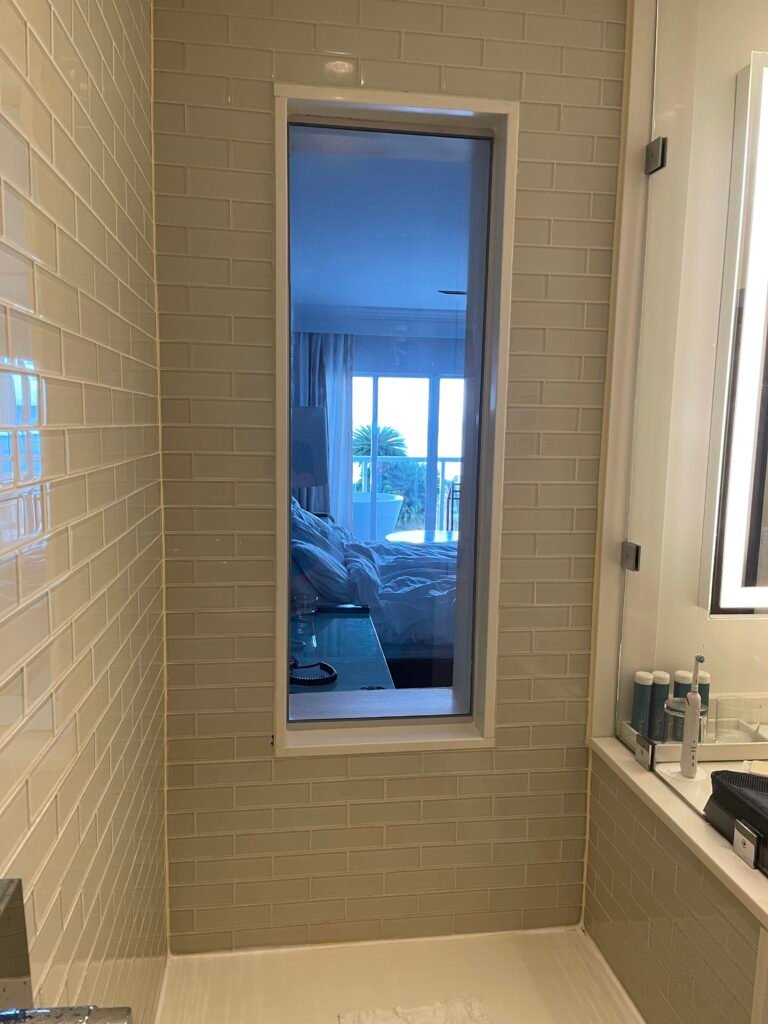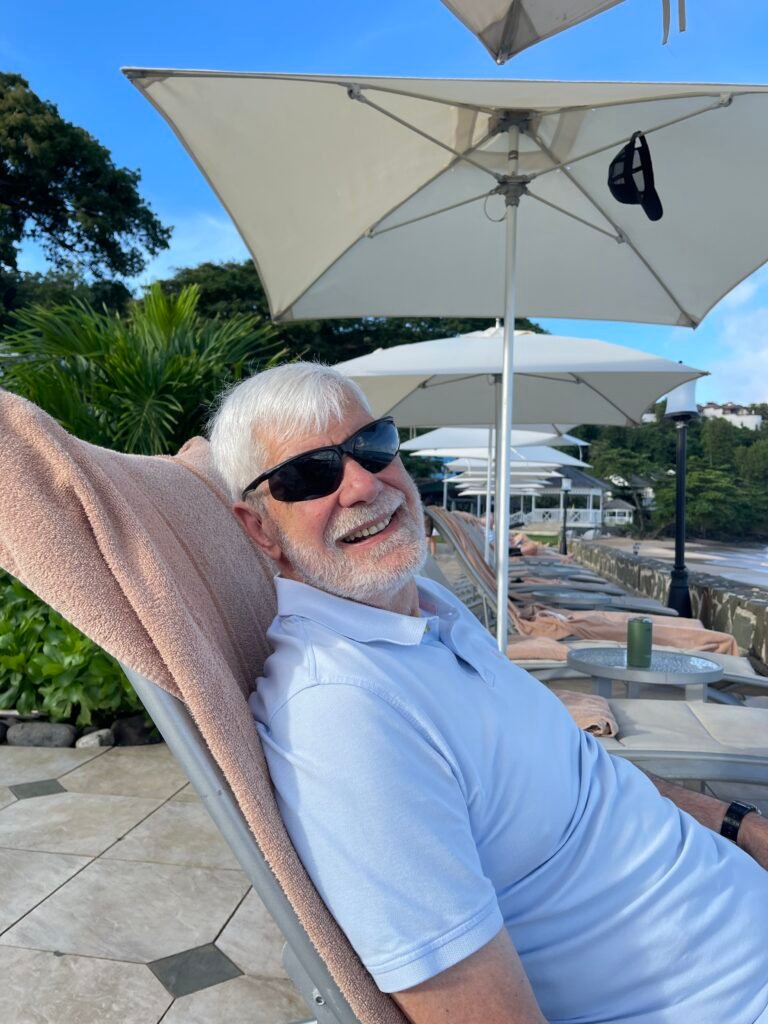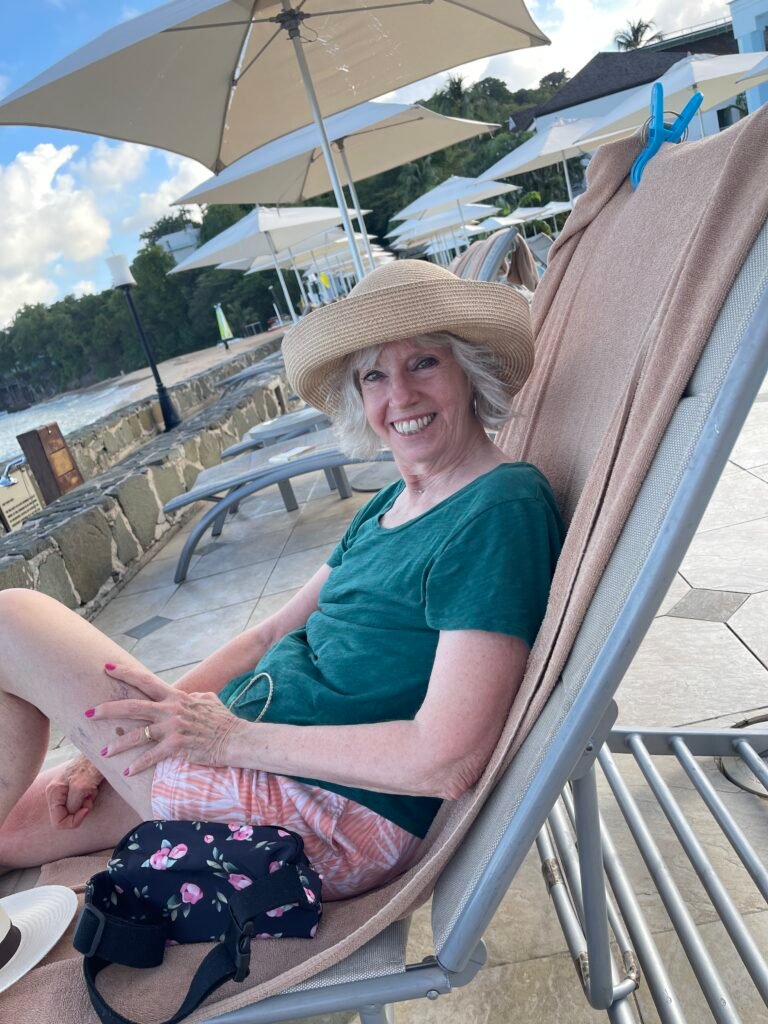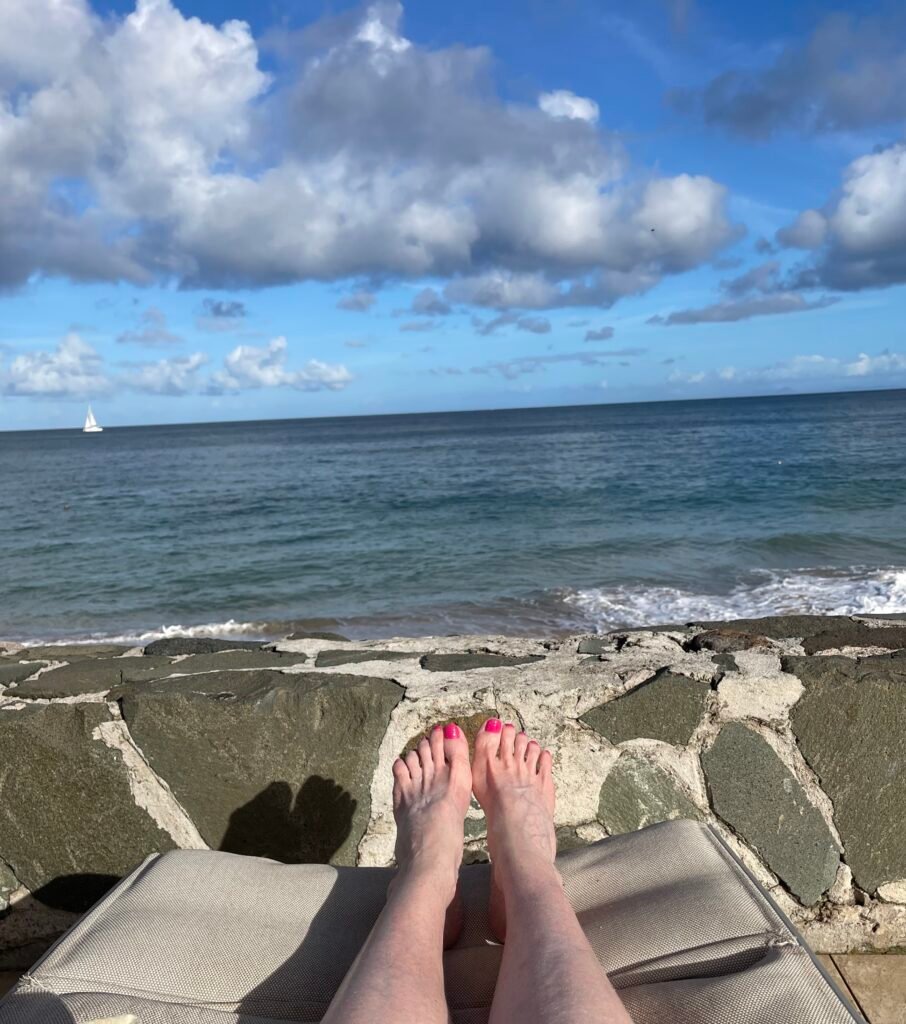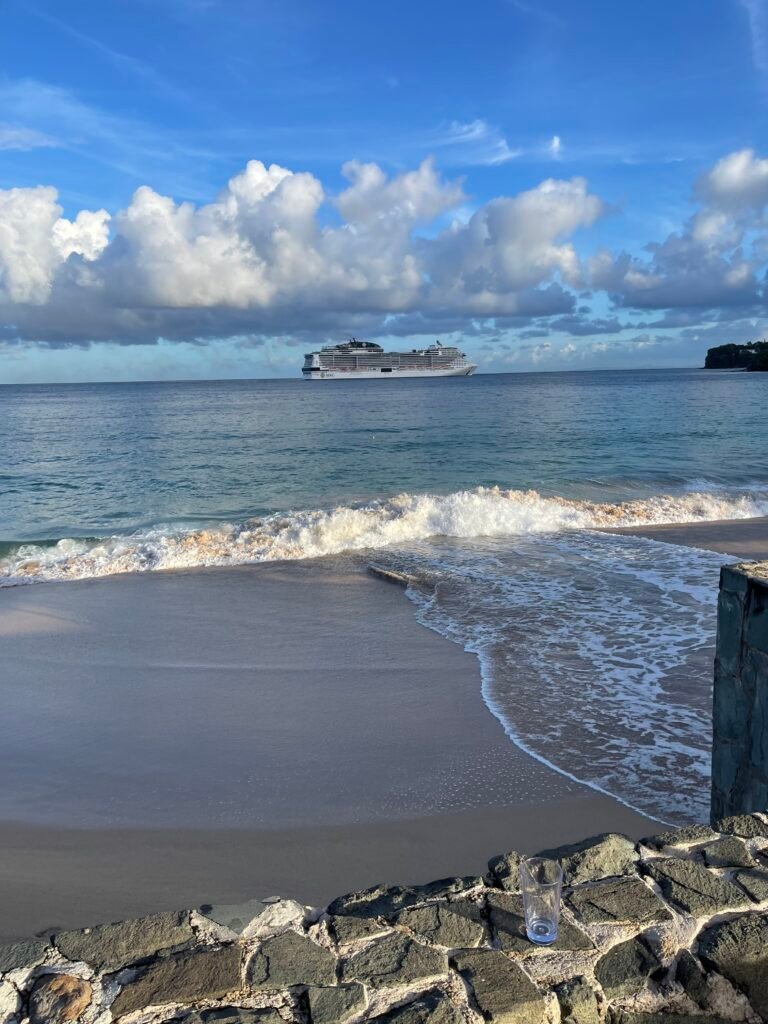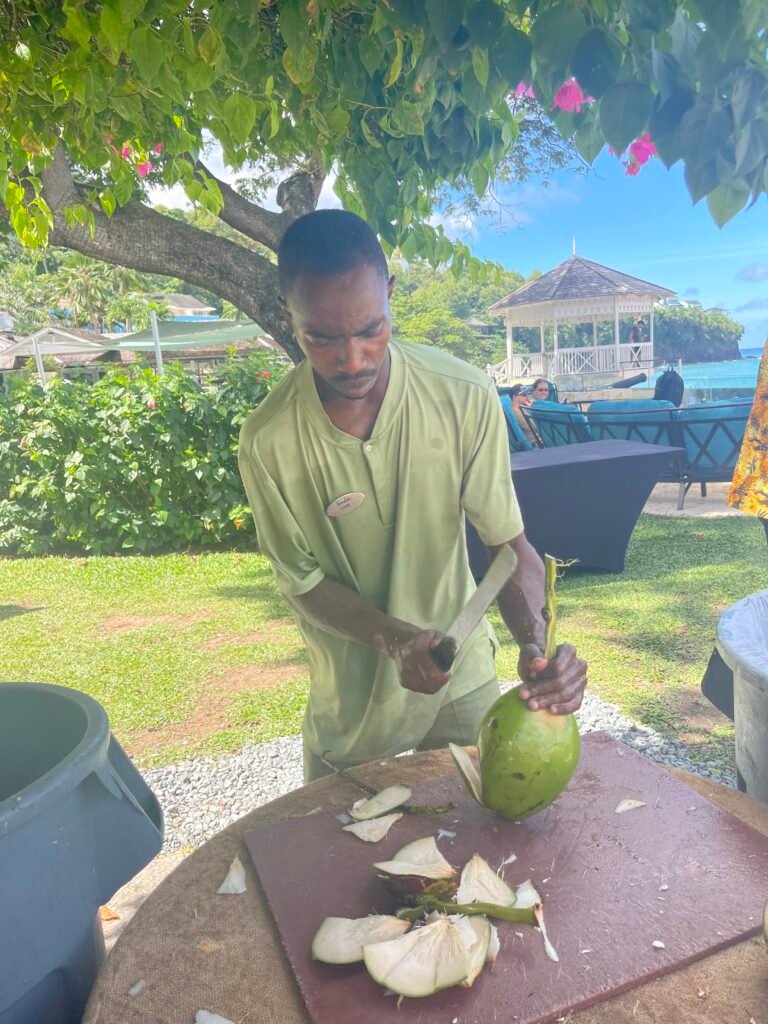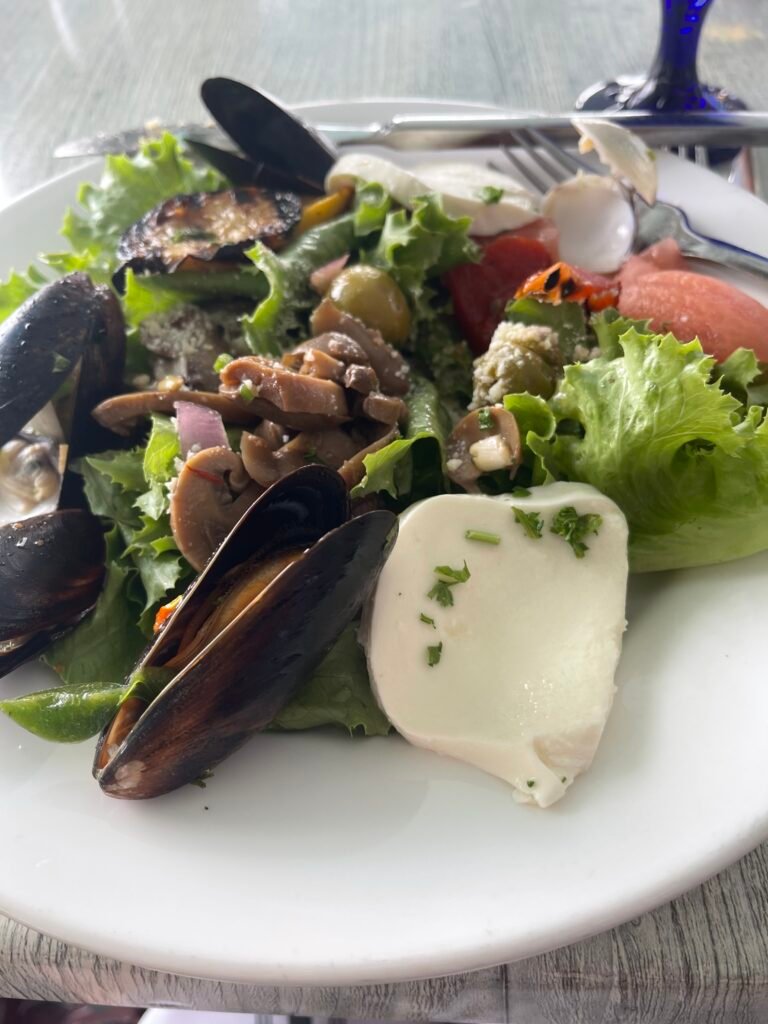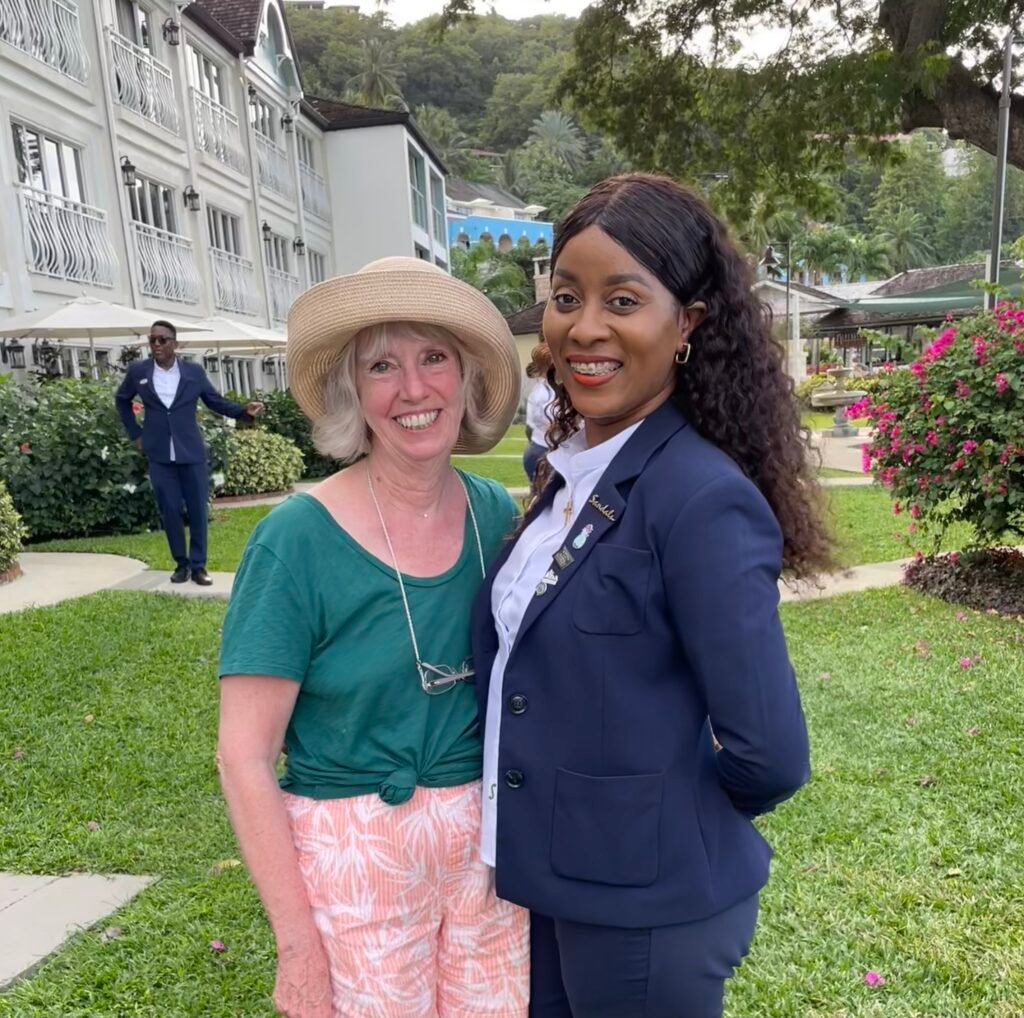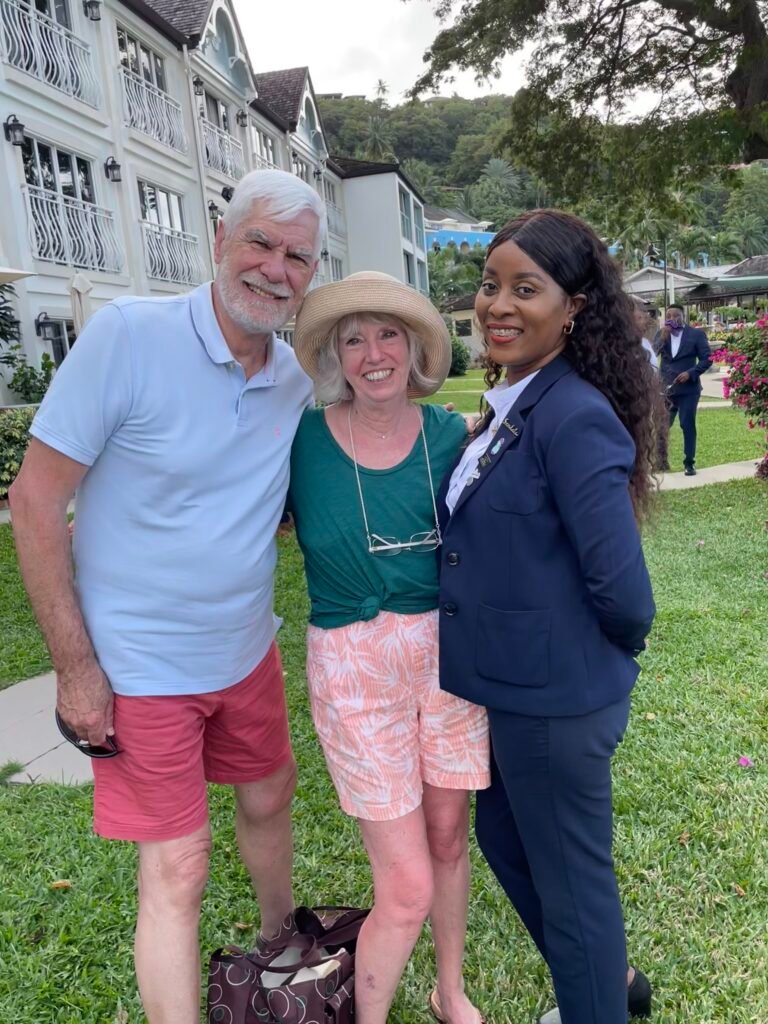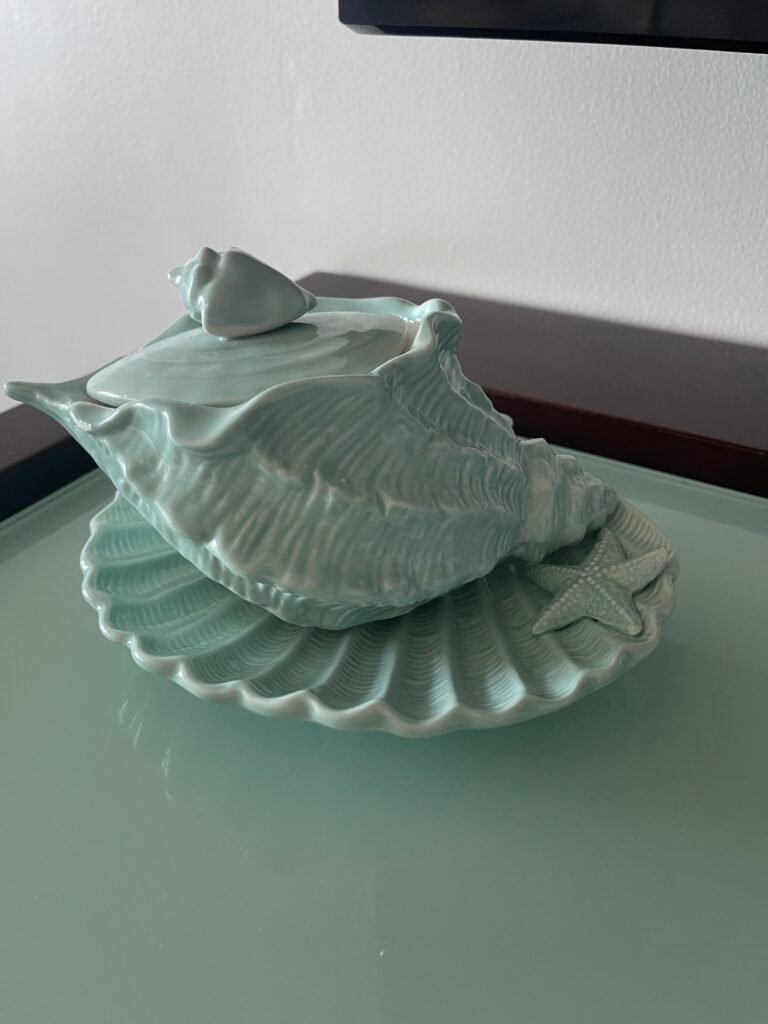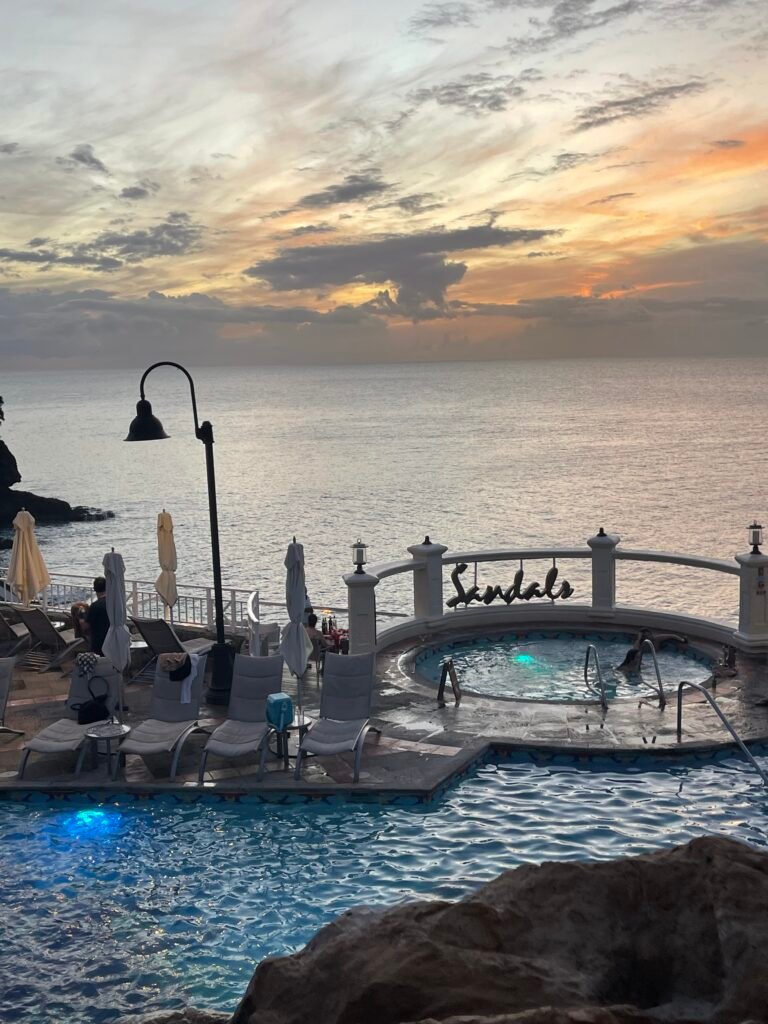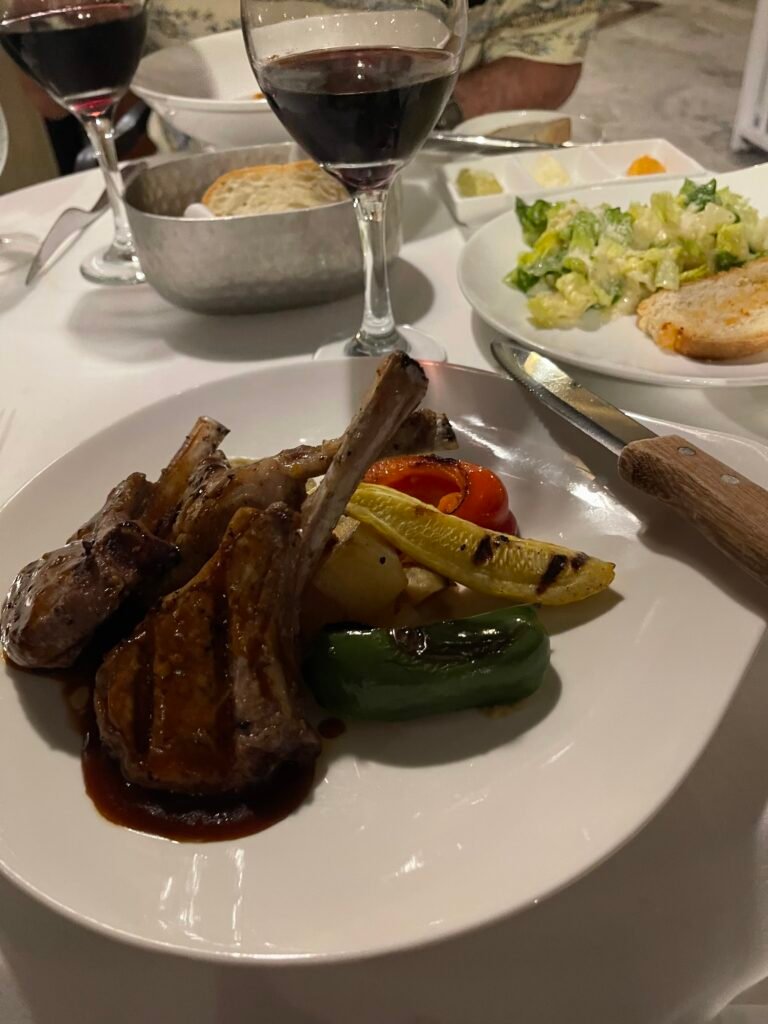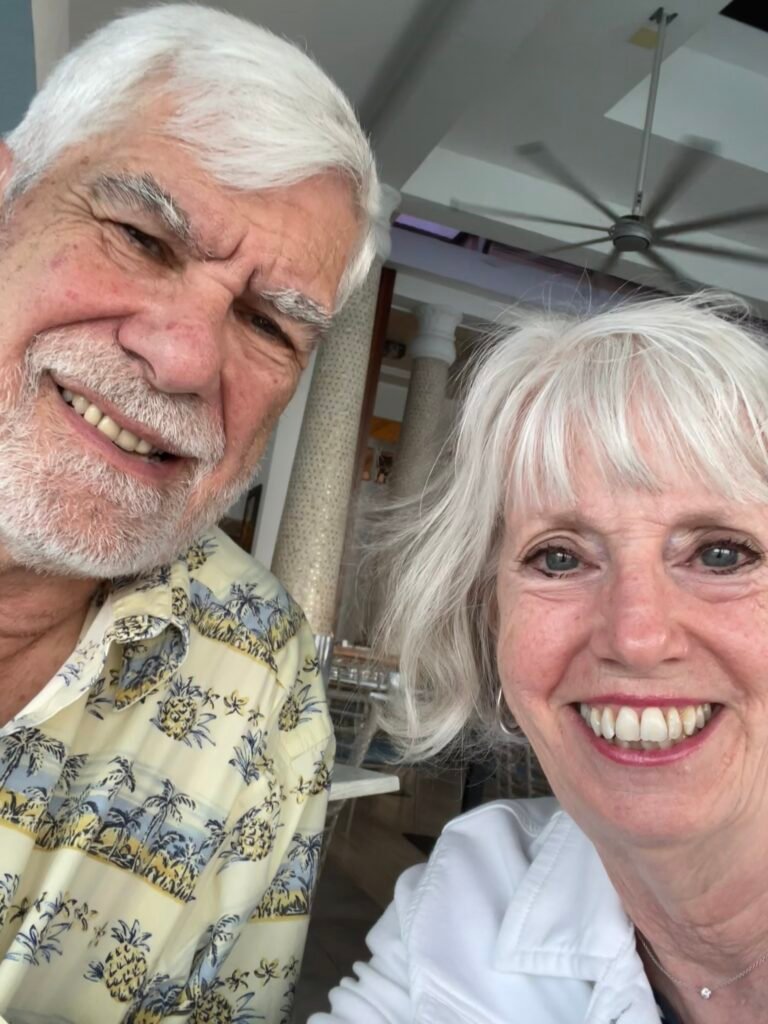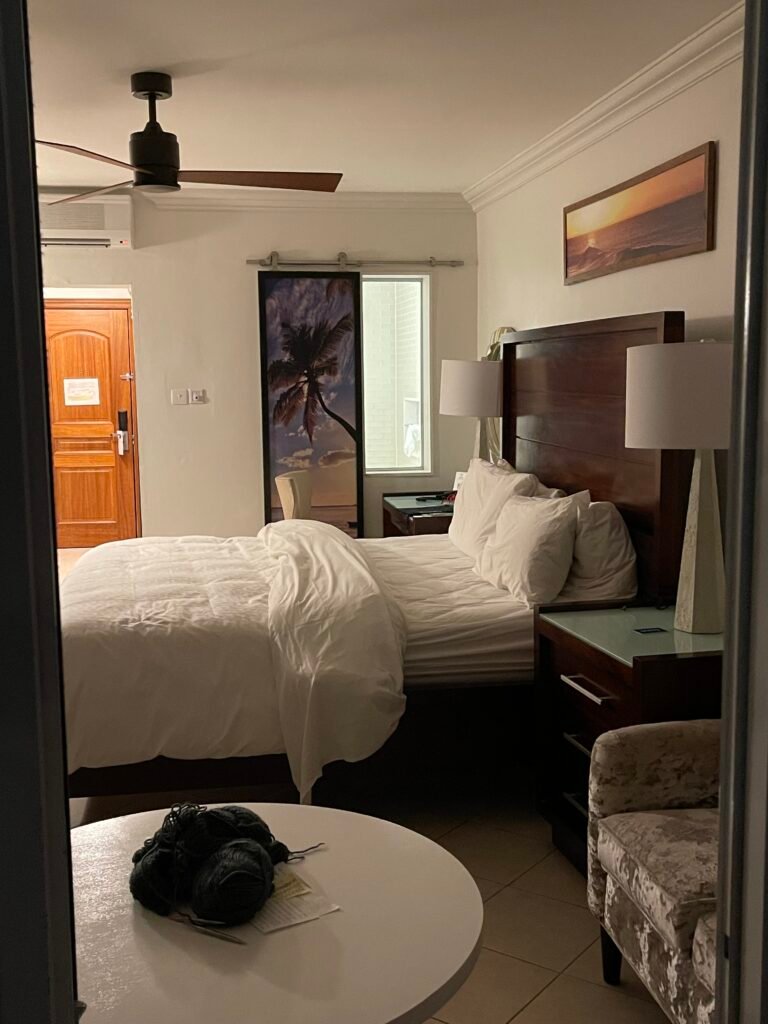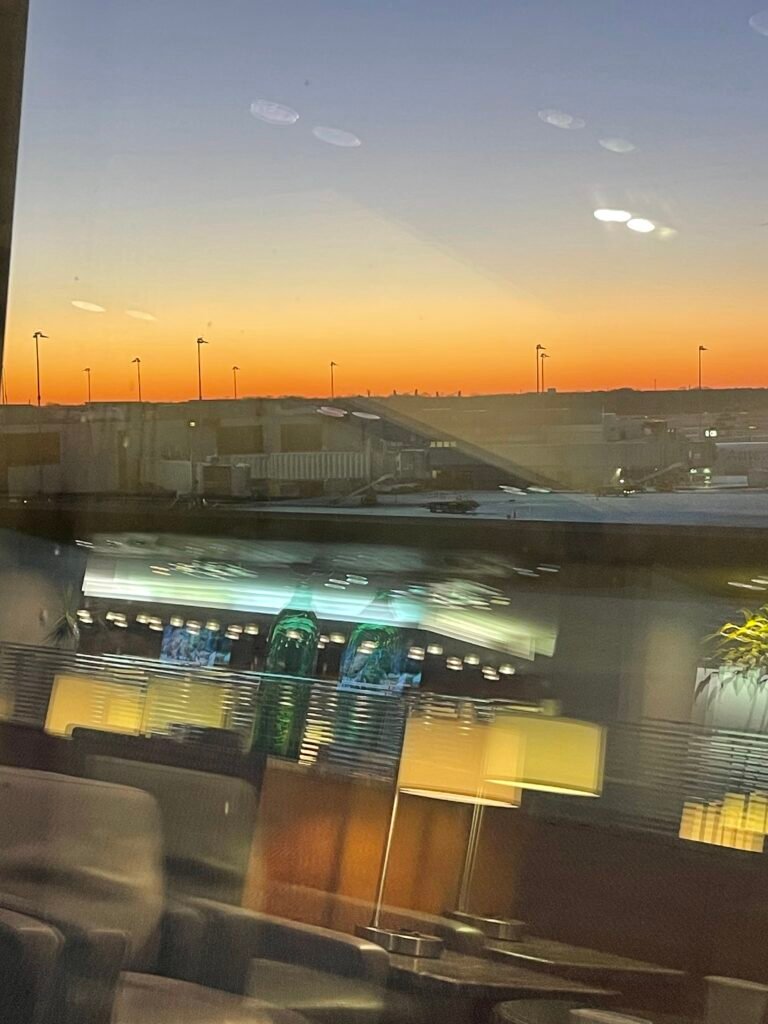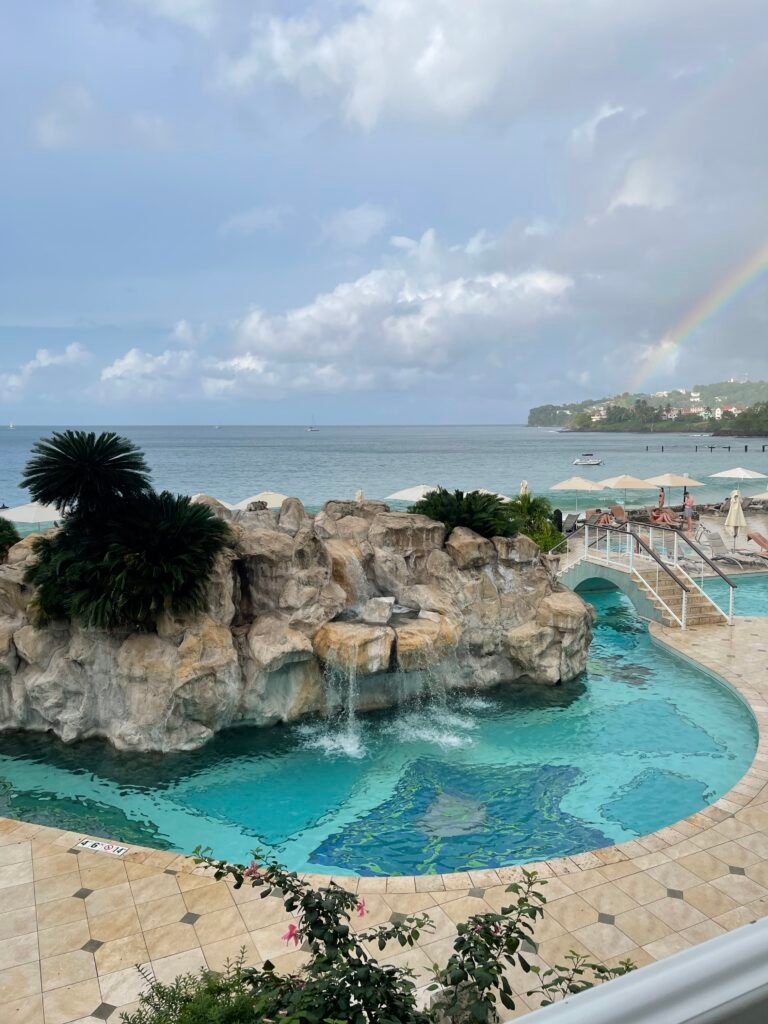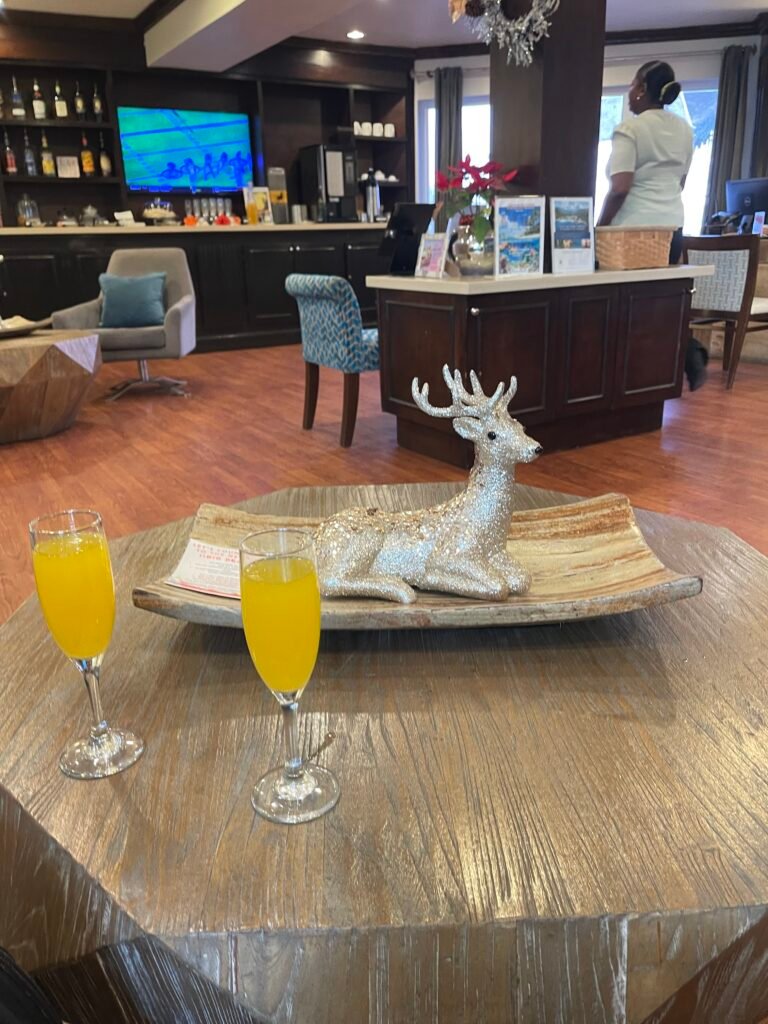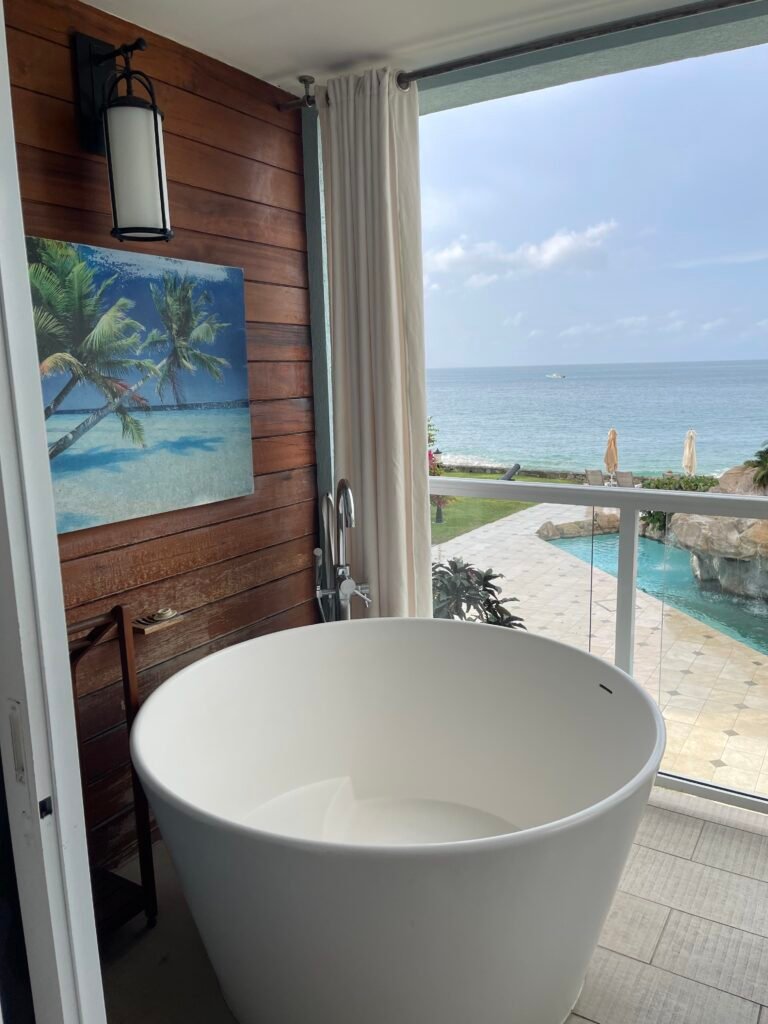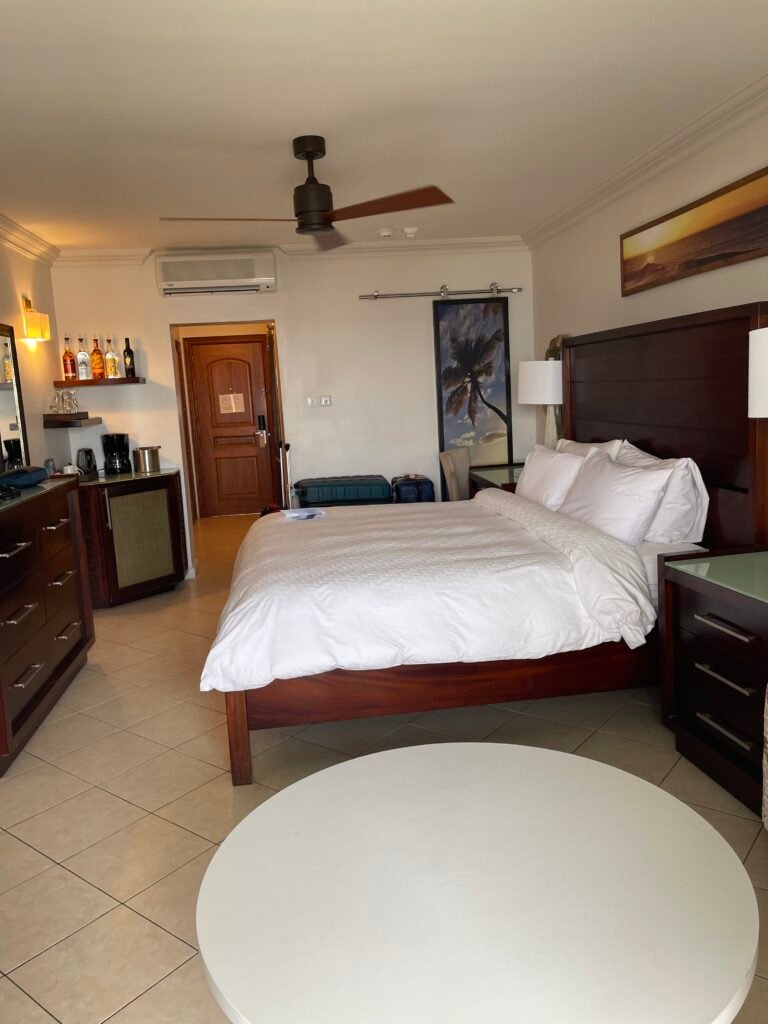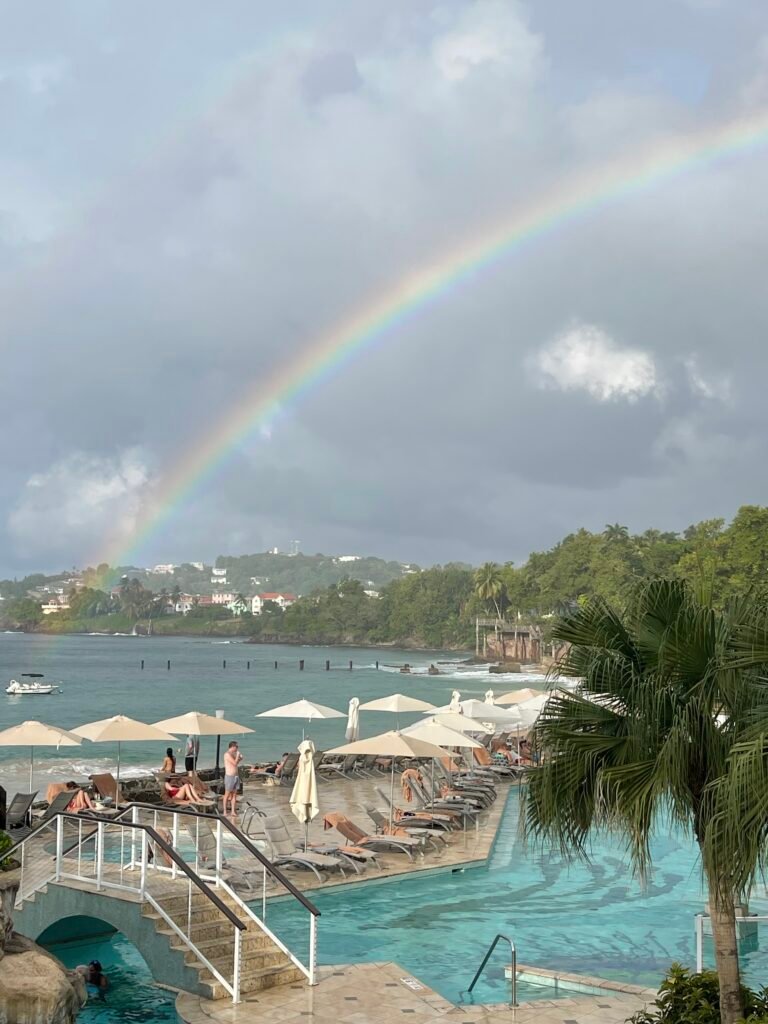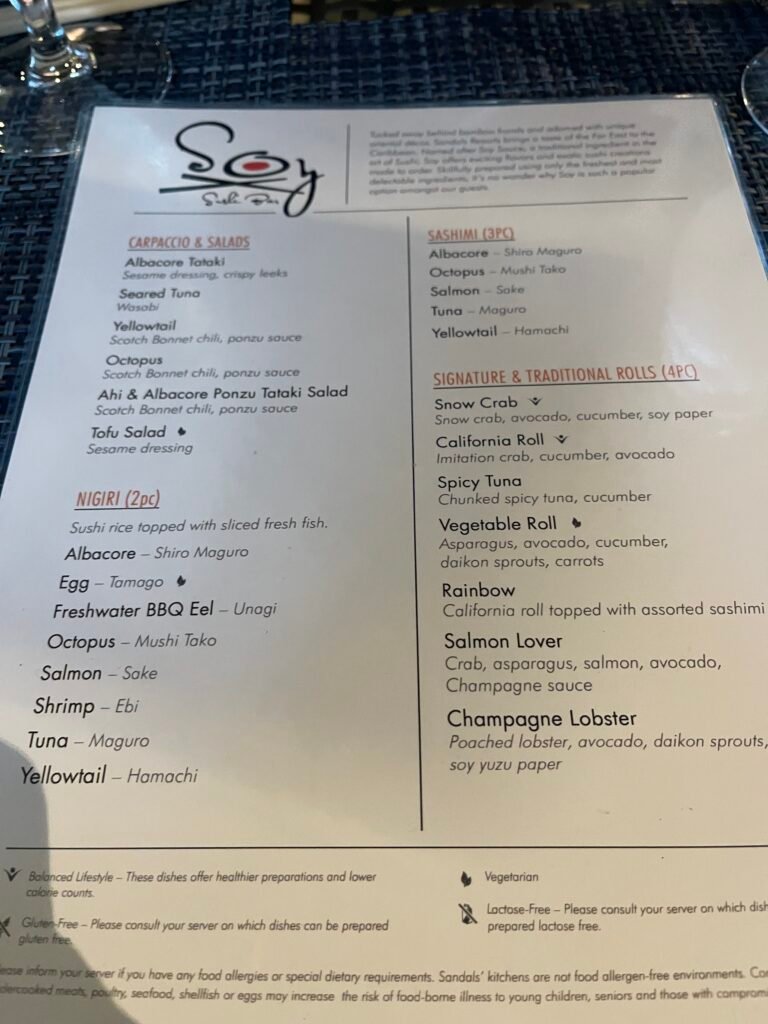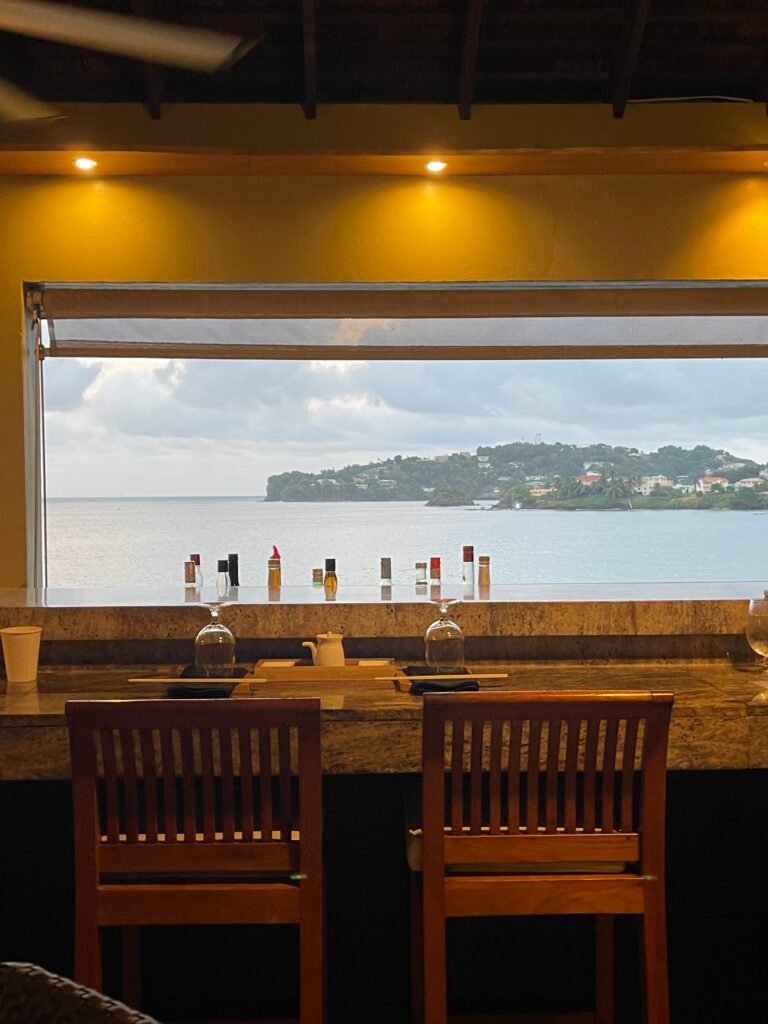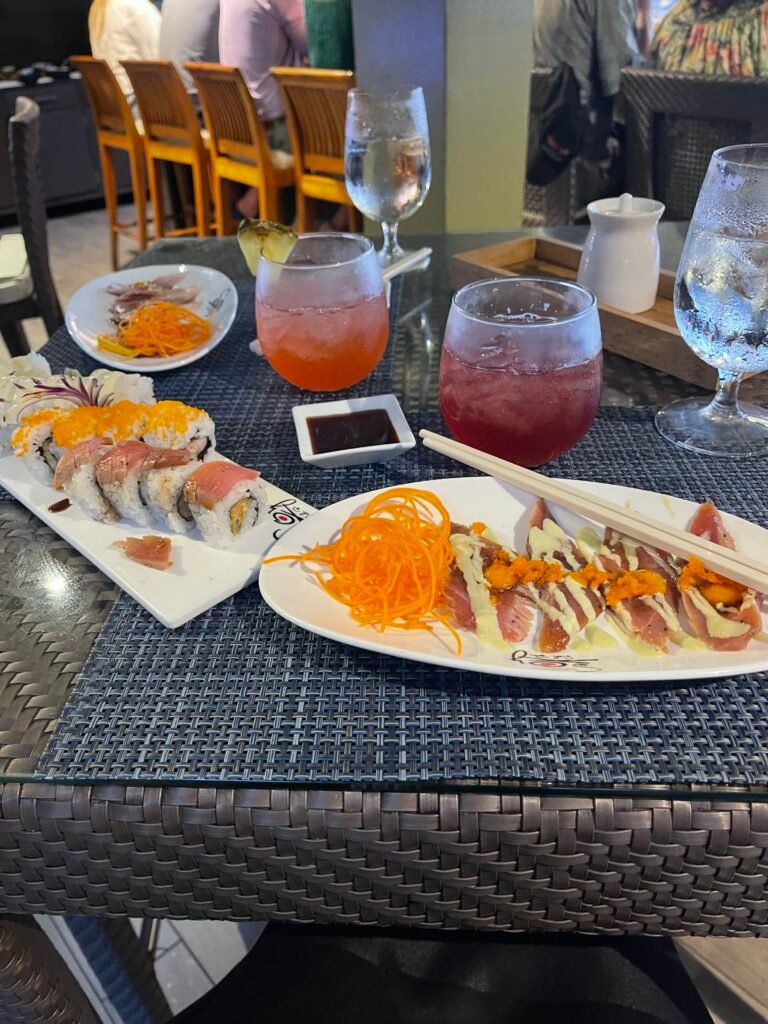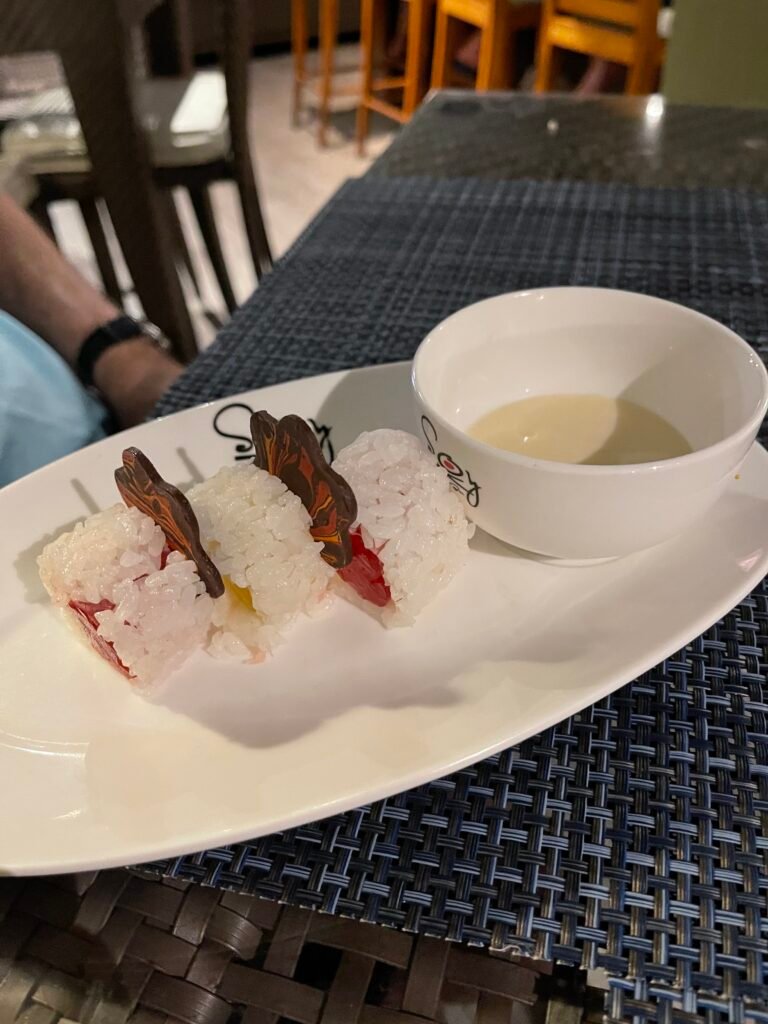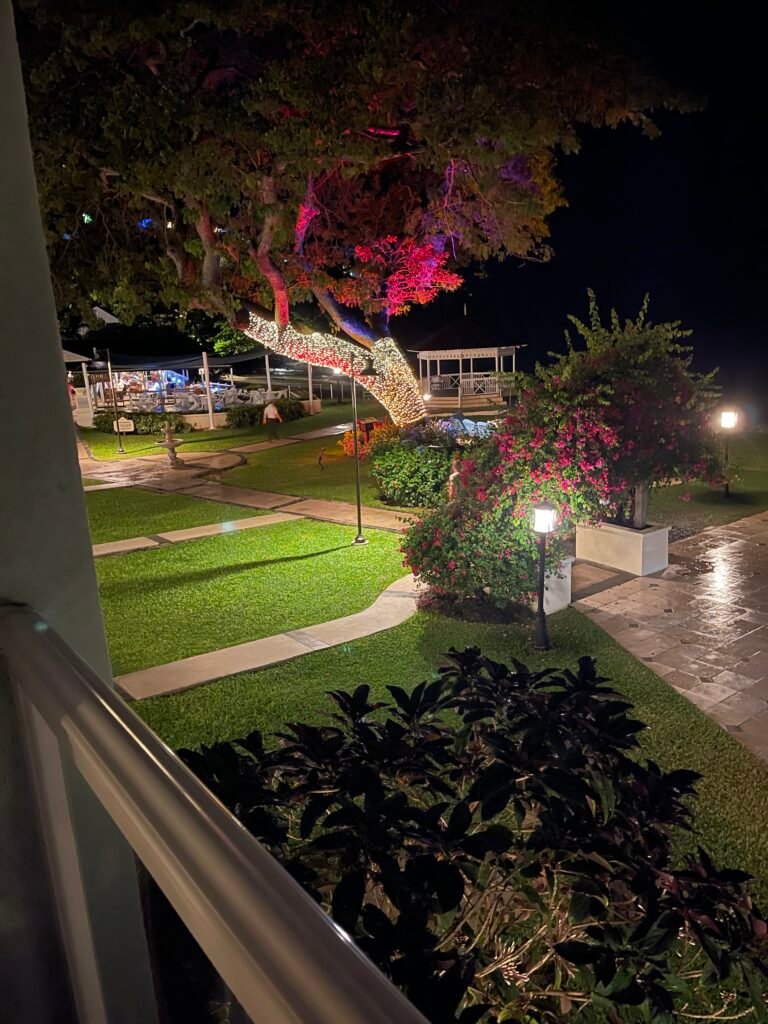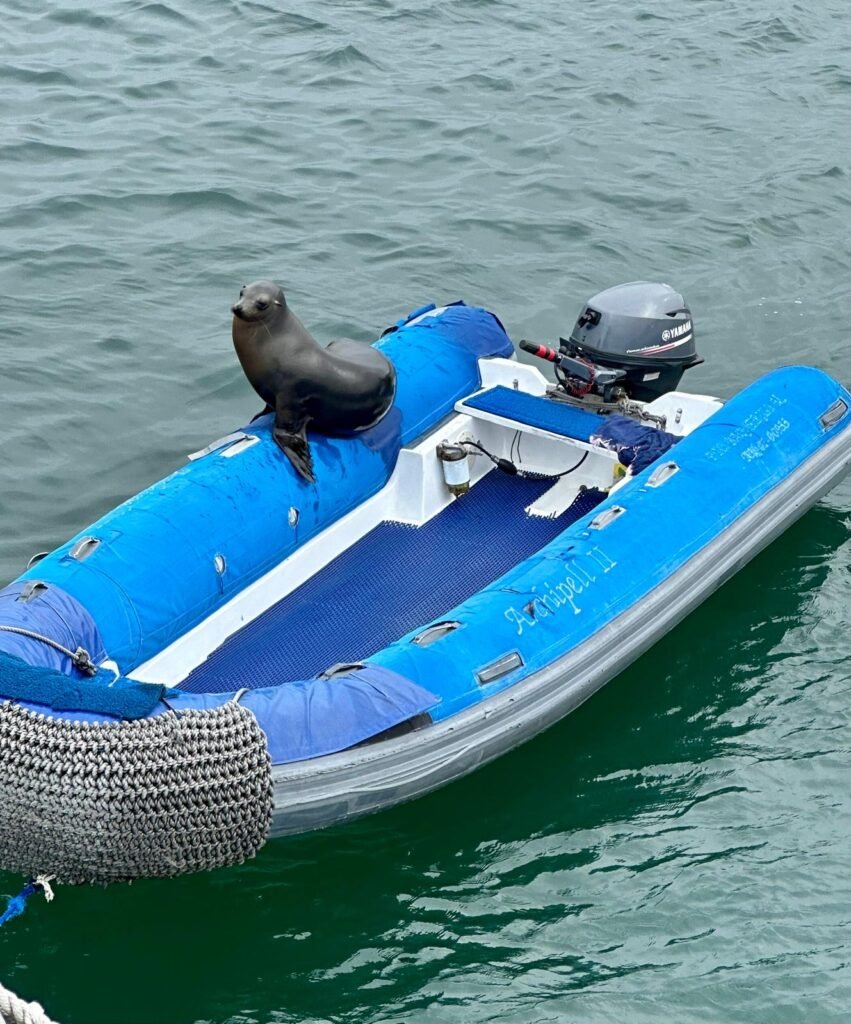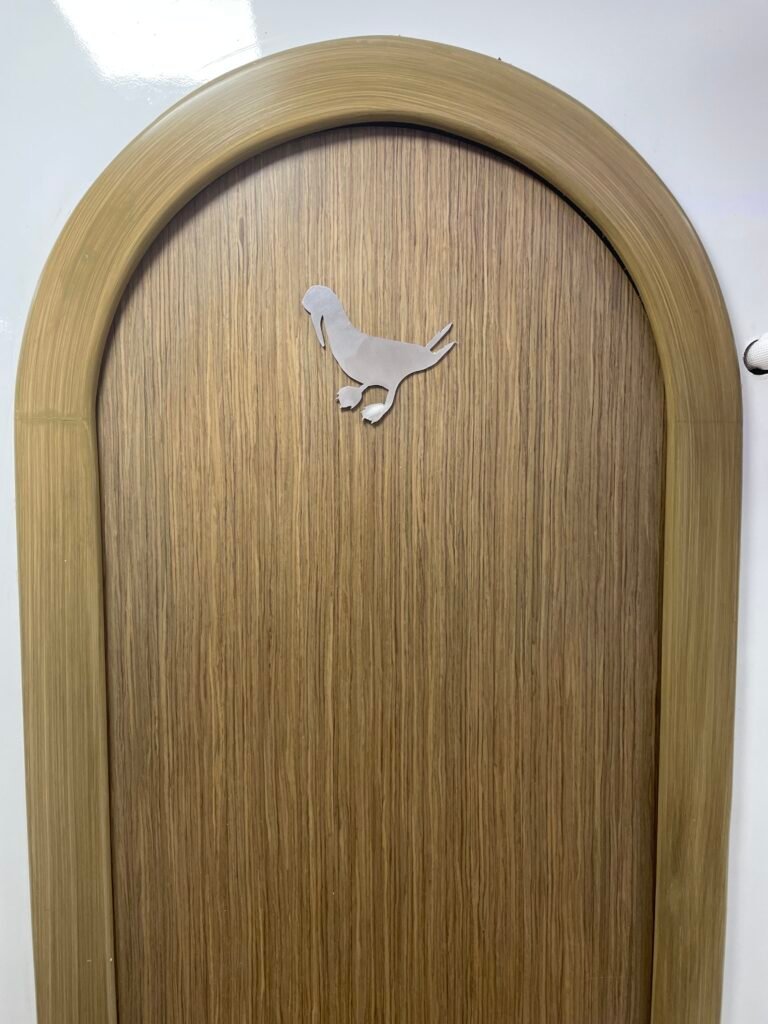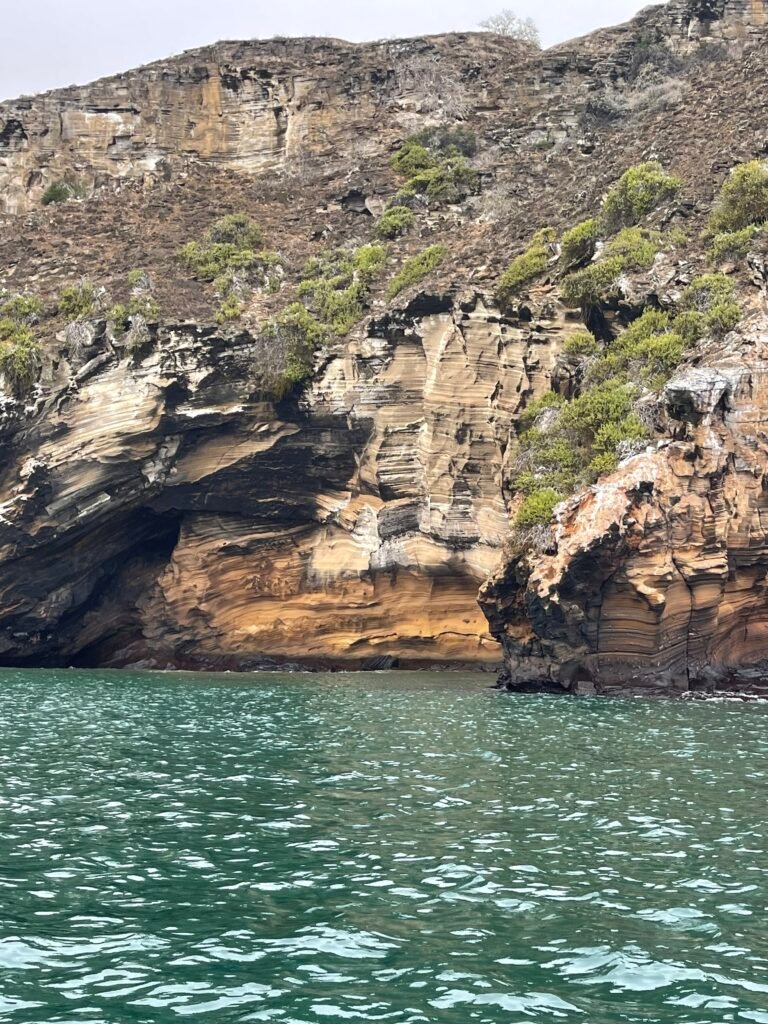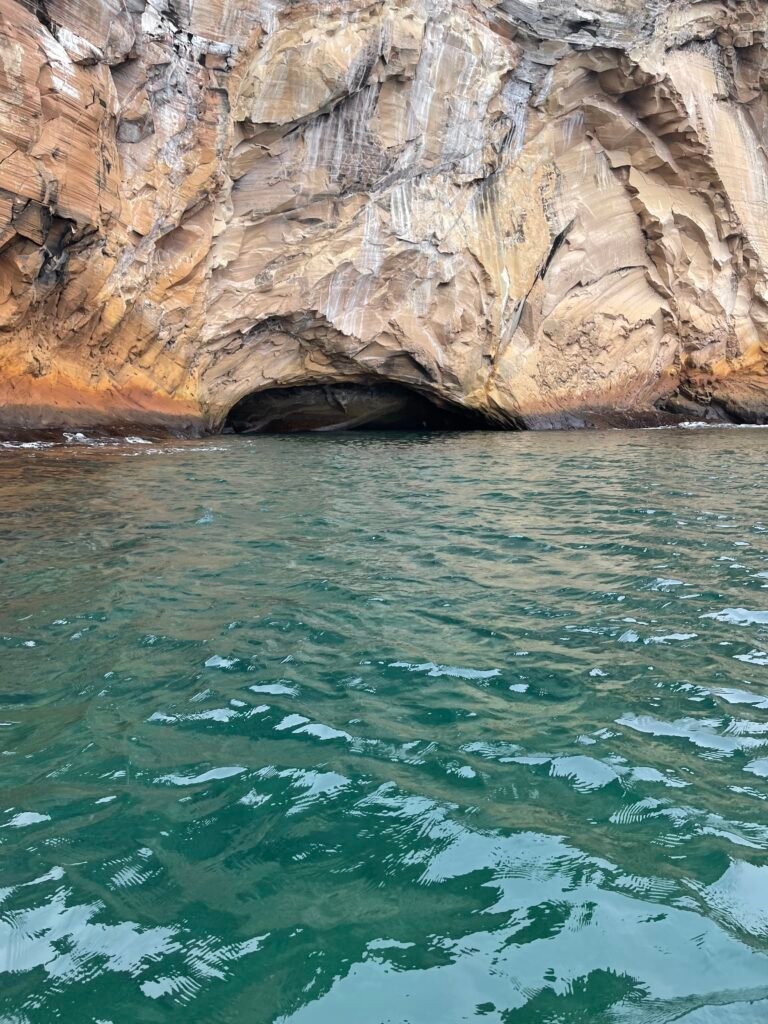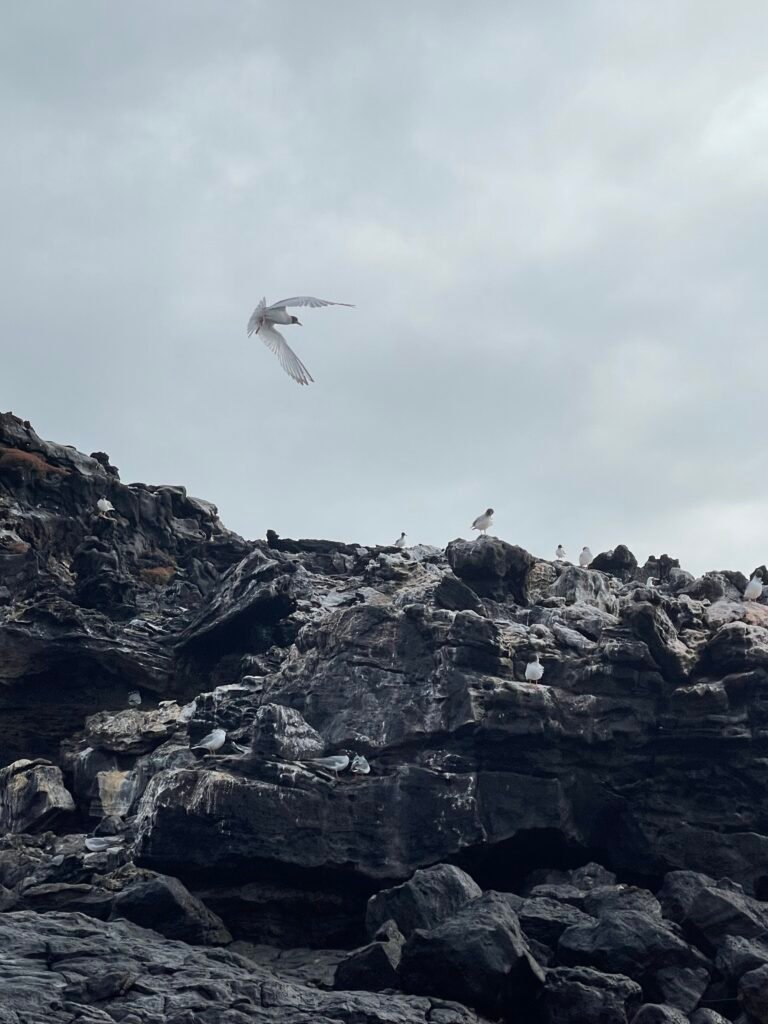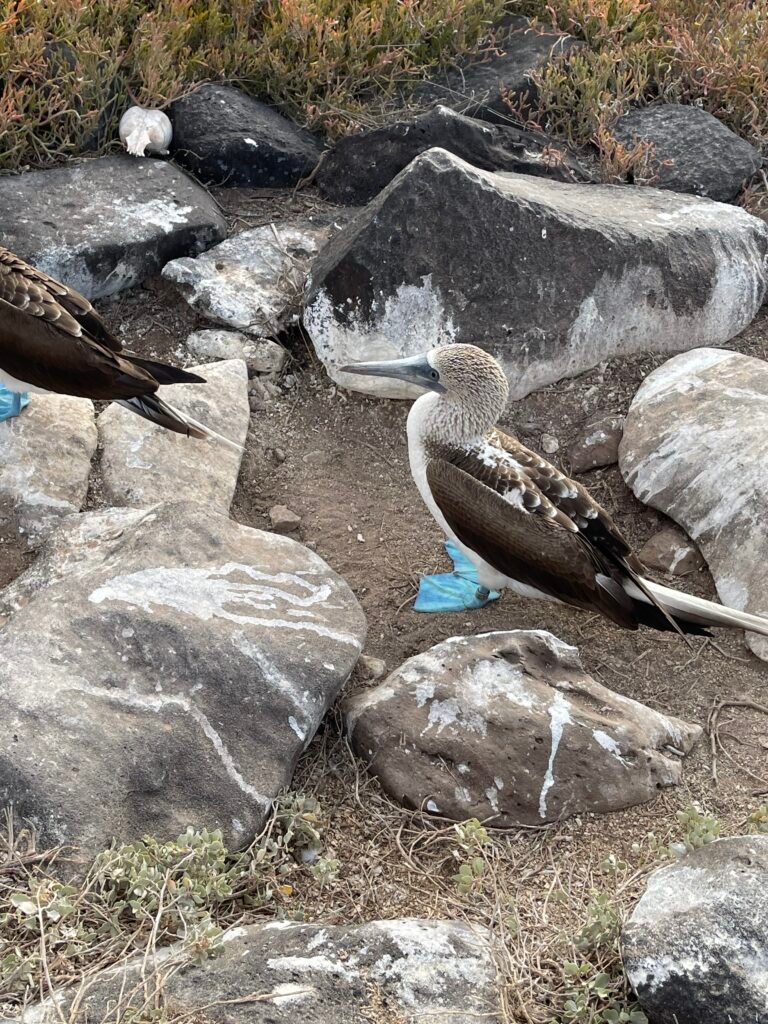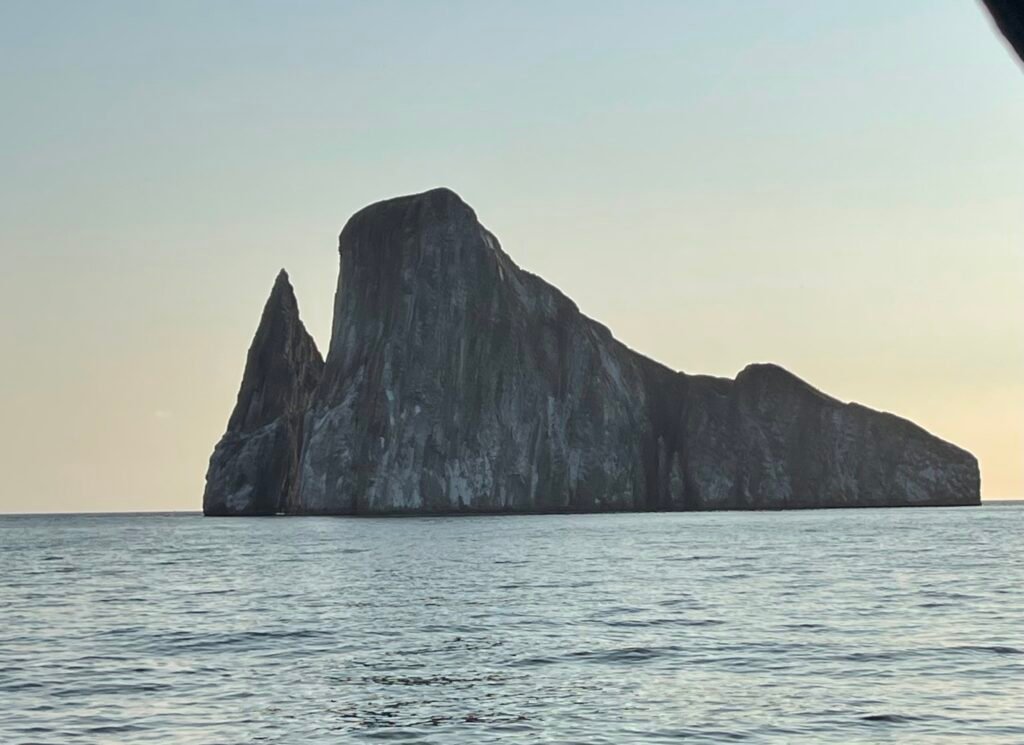We had a nice breakfast and then went to the pool. We had put huge clips on the chairs to stake out our chairs and we clipped our towels to them before we went to eat and they were there when we returned. We sat at the pool for a while and it started to rain so we left the towels and clips and went back to the room.
When the rain stopped we went back to our chairs and we see someone’s bag with shoes and a pocketbook under our towel. WTH??? Again?????
I sat down while Allan got us a drink and the people came back. I said… ummm…didn’t you see the brightly colored clips attached to the towels which means…these are our chairs!!???? They didn’t say anything. Just took their stuff and left.
I find it unbelievable that people just don’t care. They hope you won’t be back for a while and in the meantime, they’ll use the chairs. One of the staff told Allan, people do it all the time even though it isn’t right.
“ We’re gonna need a bigger ‘clip’!” (Jaws quote. Sorta!)😂😂😂
We had lunch and sat by the pool until it was time for our photo shoot. Ray came over to chat for a while with us and she asked if we were going to the manager’s party. We said of course and she said they are mentioning the head staff at the party and she said to me… when they mention my name, come up and give me a hug. I said I’ll do better than that. And I did my two finger whistle for her. She was impressed.
Our photographer Kwame was adorable and he did a great job posing us. The staff do not accept tips. When we told him how old we are he couldn’t believe it. He kept saying you both look so much younger. It was nice to know he really meant it since there was no tip involved.
When we came back to our room to get ready for the party we were invited to, there was a bucket of champagne on ice waiting for us. We’re not sure who sent it. It might have been Ray or maybe they sent it to all returning guests who were invited to the party.
The party was really wonderful! You can see from the picture of the menu that they went all out. They introduced the staff and when Ray’s name was mentioned, of course, I ran up and hugged her.
We sat with two other couples and also a staff member, Pat, who works at the loyalty area to book future trips. We had great conversations all night and really enjoyed the food. We are seriously thinking of meeting with Pat to book another Sandals vacation for the future.
We were given a bottle of rum as a gift and all in all, it was a lovely evening.
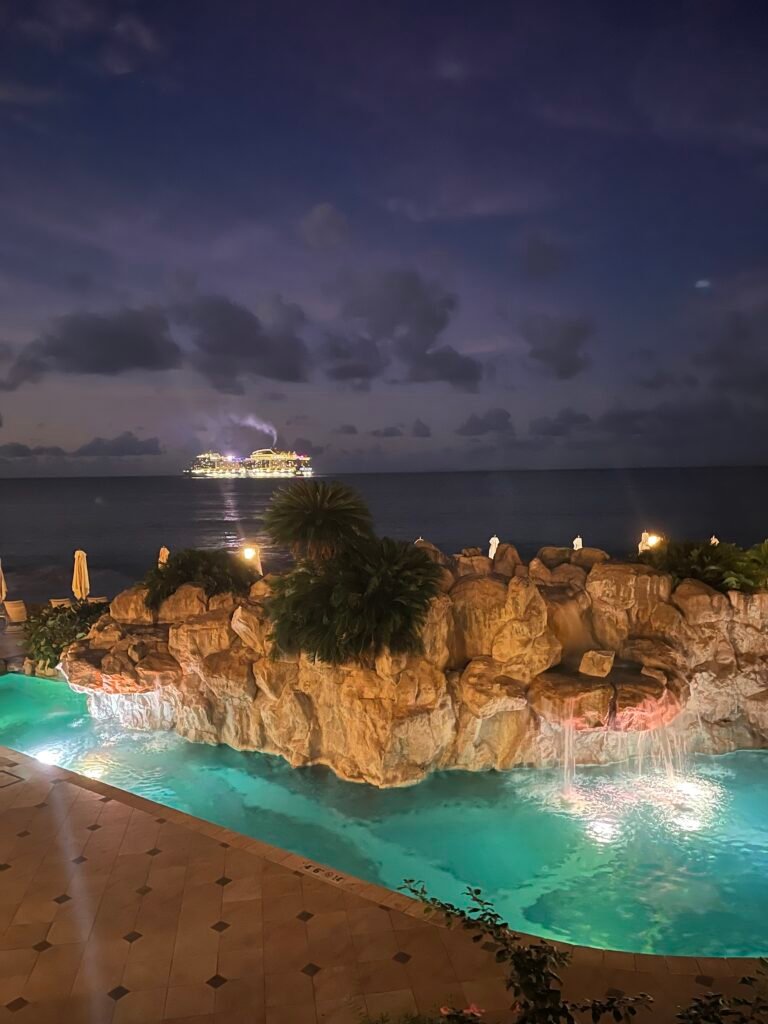
We see the cruise ships coming and going from our balcony.

We’re gonna need a bigger clip!!
Our clips are much bigger than they look in the pic.
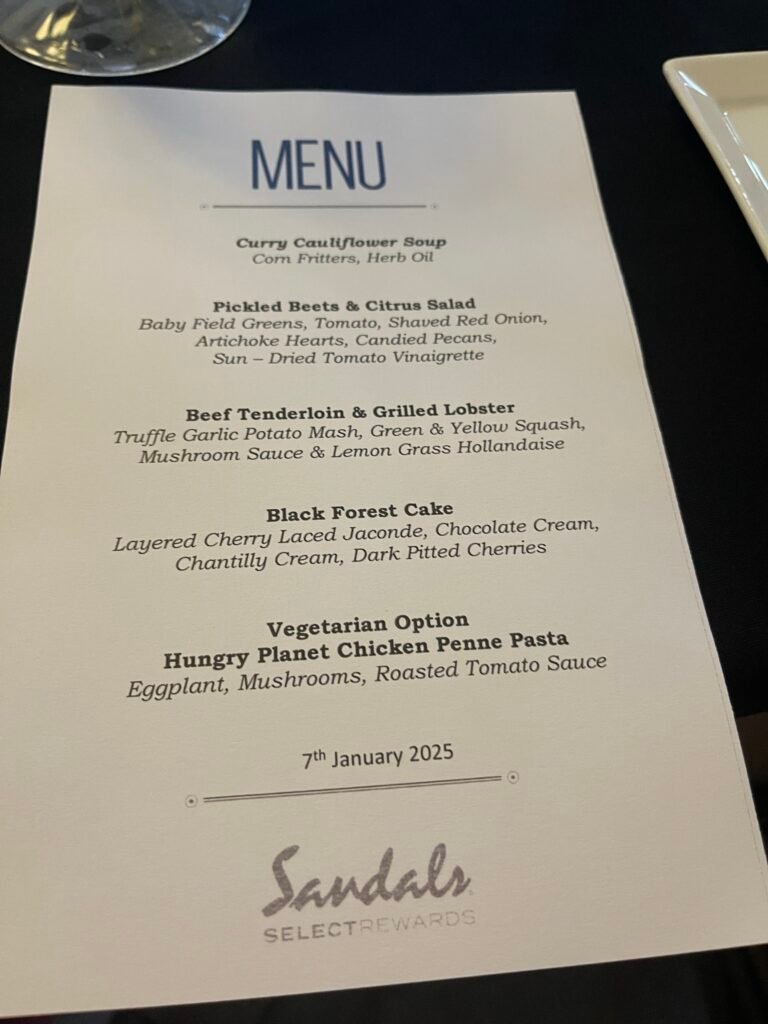
The party menu
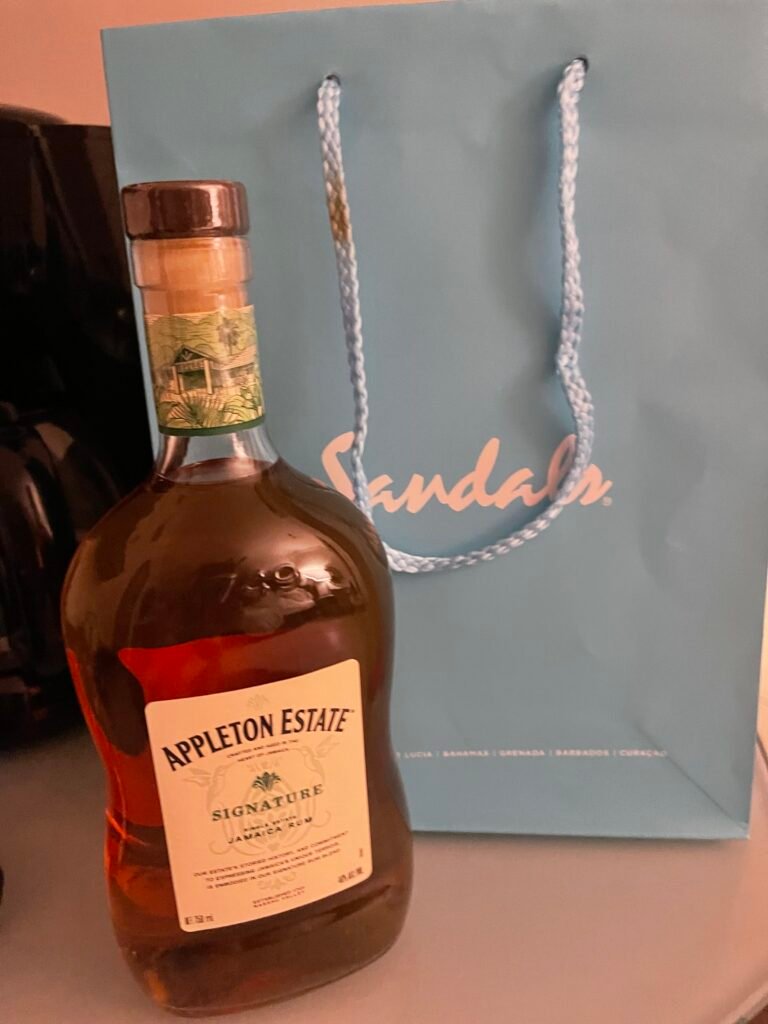
Our gift

